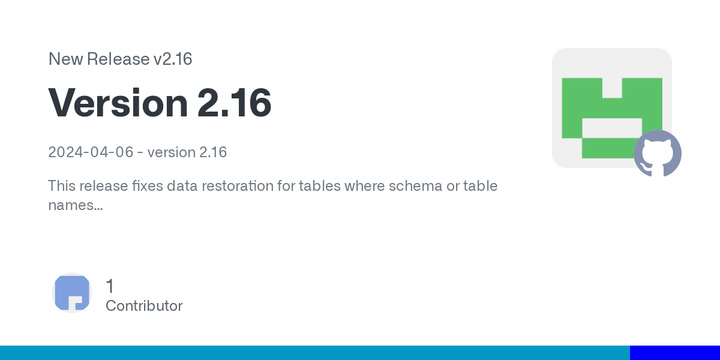pg_dumpbinary v2.17 released
pg_dumpbinarydumps a PostgreSQL database to a binary format. The resulting dump must be restored usingpg_restorebinary, which is provided.This release adds two new options to command pg_restorebinary:
- Add option
-C, --createto pg_restorebinary to create the database before restoring into it. Like with pg_restore you must provide a database to connect using the-doption.- Add
--dump-createto print to stdout the create and alter database statements.
pg_dumpbinaryis useful when:
- You have bytea that can not be exported by
pg_dumpbecause the total size of the escape/hex output exceeds 1Gb.- You have custom type that stores
\0internally in bytea but data are exported by pg_dump as char/varchar/text. In this case pg_dump truncates all data after the first\0, resulting in data loss.- Other cases where a binary output format is useful.
In these kinds of cases
pg_dumpbinaryhelps by dumping the PostgreSQL database in a binary format. In all other cases the pg_dump/pg_restore commands distributed with PostgreSQL are preferred.
See the documentation for a more complete description of available features.
pg_dumpbinary v2.17 for PostgreSQL has been released. The release introduces two new options to the command pg_restorebinary: -C, which creates a database before restoring, and --dump-create, which prints the creation and alteration statements.

